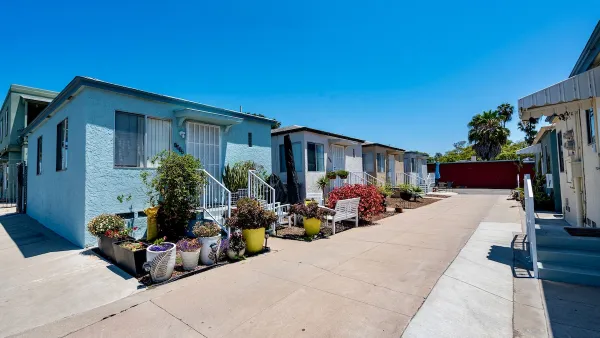Jed Kolko examines America's most diverse neighborhoods and finds that not only are they mostly located in the suburbs, but that they also have higher population growth and faster-rising home prices compared to less-diverse neighborhoods.
Using Census data on race and ethnicity, Kolko and his colleagues "measured diversity as the share of a metro area's or ZIP code's population in its largest racial or ethnic group: the smaller the share of the largest group, the more diverse the neighborhood is." They found that among the 100 largest metropolitan areas in America, San Jose is ranked the most diverse, followed by New York, Oakland, Houston, Honolulu, Fort Lauderdale, Orange County, Memphis, San Francisco, and Alburquerque. The least-diverse parts of the country are identified as New England and parts of Pennsylvania, Ohio and West Virginia, as seen on this diversity map.
As defined by ZIP codes, the most diverse neighborhoods were determined to be Broadmoor Hills and Song in Irving, TX; followed by Queens Village in Queens, NY; San Francisco's Treasure Island; Lakemont in Houston, TX; Wahiawa in Honolulu, HI; Kahuku in Honolulu, HI; Rainier View in Seattle, WA; Dorchester in Boston, MA; Kapolei in Hononlulu, HI; and South Natomas in Sacramento, CA. Kolko noted that these areas "are not the densest, most central or best-known neighborhoods" and that "the most diverse neighborhoods in America are located in metro areas that aren't especially diverse overall, like Seattle (67% White) and Boston (69% White)."
Moreover, the most expensive neighborhoods are not diverse and consist of largely White populations including New York's West Village (83%) and Beverly Hills (83%). The "hipster" neighborhoods are a little more mixed, says Kolko, such as Brooklyn's Williamsburg, Chicago's Wicker Park, San Francisco's Mission District, and Los Angeles's Silver Lake. He also points out that non-White neighborhoods don't equate to diversity as seen in Chicago's Englewood and two of Washington D.C.'s Anacostia neighborhoods (95% black); Boyle Heights in Los Angeles and Miami's Hialeah (95% Hispanic); and Monterey Park in Los Angeles and Flushing in Queens (70% Asian).
Based on U.S. Postal Service data, Kolko compared population growth and home prices between diverse neighborhoods and other neighborhoods. He found that "[t]he more diverse neighborhoods have both higher population growth and stronger price growth in the past year - and they're a bit more expensive to begin with," concluding that "Americans, therefore, are moving toward diverse neighborhoods."
"However," he warns, "growth in those neighborhoods could affect their diversity: if prices in diverse neighborhoods rise, lower-income residents may get priced out over time."
FULL STORY: Finding Diversity in America

Planetizen Federal Action Tracker
A weekly monitor of how Trump’s orders and actions are impacting planners and planning in America.

Map: Where Senate Republicans Want to Sell Your Public Lands
For public land advocates, the Senate Republicans’ proposal to sell millions of acres of public land in the West is “the biggest fight of their careers.”

Restaurant Patios Were a Pandemic Win — Why Were They so Hard to Keep?
Social distancing requirements and changes in travel patterns prompted cities to pilot new uses for street and sidewalk space. Then it got complicated.

Platform Pilsner: Vancouver Transit Agency Releases... a Beer?
TransLink will receive a portion of every sale of the four-pack.

Toronto Weighs Cheaper Transit, Parking Hikes for Major Events
Special event rates would take effect during large festivals, sports games and concerts to ‘discourage driving, manage congestion and free up space for transit.”

Berlin to Consider Car-Free Zone Larger Than Manhattan
The area bound by the 22-mile Ringbahn would still allow 12 uses of a private automobile per year per person, and several other exemptions.
Urban Design for Planners 1: Software Tools
This six-course series explores essential urban design concepts using open source software and equips planners with the tools they need to participate fully in the urban design process.
Planning for Universal Design
Learn the tools for implementing Universal Design in planning regulations.
Heyer Gruel & Associates PA
JM Goldson LLC
Custer County Colorado
City of Camden Redevelopment Agency
City of Astoria
Transportation Research & Education Center (TREC) at Portland State University
Camden Redevelopment Agency
City of Claremont
Municipality of Princeton (NJ)




























